Fish tank cycle is a process of systematically establishing beneficial bacteria in the aquaponics system. Cycling starts with the addition of ammonia from any source to the system.
If you’re reading this, you might be in the thinking or in process of making your first aquaponic system. You have researched properly to choose your fish for aquaponics and immediately got the best fish to start the aquaponics system. Then you searched about setting up the system and realized you ignored maintaining your system and your fish! So to get started, you have to learn a few important things, especially if you’re cycling your tank with fish!
Cycling starts with the introduction of ammonia to the system. You can add ammonia to the aquaponics system either with fish or without (fishless). We’ll talk about cycling system with fish in this article.
Fish can die if cycling isn’t done properly. Read How to cycle Aquaponics System without Fish
Table of Contents
Kicking off the Cycle: adding the fish
Although cycling aquaponics system using fish can be more frustrating with the involvement of live critters, this option is the easier of the two processes as there is no extra input.
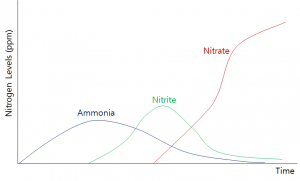
- After adding water to your system, turn on the pump and let it run for 2-3 days. You can dissipate the chlorine from tap water by doing this. Do not add fish or plants at this stage.
- After 2-3 days, put some sacrificial fish (such as goldfish) that you can buy for cheap. These fish will produce waste that contains ammonia.
- It is better to wait 1-2 weeks to put seedlings to your grow beds. However, you can add at this stage too.
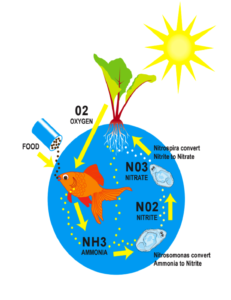
The ammonia level will steadily rise to a peak over the first 10-15 days. You should not feed the fish during this time as it will only add to the problems. Fish can go over 3 weeks without food. The ammonia is high because bacteria that turn it into nitrites haven’t established enough to quickly start the nitrogen cycle.
There are two nitrifying bacteria. The first one to colonize your system is Nitrosomonas that convert the ammonia into nitrites (NO2). This is an important stage in cycling activity.
The nitrite level will increase to peak after 25 days into the cycle. The nitrites are even more harmful than ammonia!
Read about how to Avoid and Treat Nitrite Poisoning in Your Aquaponics System.
The nitrites attract Nitrospira that converts the nitrite into nitrate, that is an excellent nutrient for the plants and not toxic to the fish. This is the last step in the nitrogen cycle.
Are We There Yet?
The following observation will indicate that your system will be fully cycled and the aquaponics system is set up
- You find nitrates in the water.
- Water testing shows the concentrations of both ammonia and nitrite dropped to lower than 0.5 ppm
- The regular feeding does not increase the level of ammonia and nitrite
You can expect zero (or less than 1mg/l) levels of ammonia and nitrite in your system by 40 to 50 days. The nitrate levels should be more than 100 ppm.
Now, you can add more fish to the tank. However, Add a few fish at a time with a pause of at least a couple of days.
Although your biofilter is ready to process the fish wastes, the bacteria need to populate and grow along with your fish stocks. While it occurs more rapidly in a properly cycled aquarium, it’s still not immediate. Adding a lot of fish at once can still lead to harmful spikes in ammonia with your biofilter struggling to catch up.
High Level of Ammonia is dangerous for your Fish. For more information, read our post about the role of Ammonia in Aquaponics System
Adding Plants
Add plants right away when you start to cycle your new aquaponic system. The plants can absorb nitrogen from ammonia, nitrites, and nitrates in all phases of the cycling process to varying degrees. However, plants will be happiest when nitrates become available after the bacteria have fully established themselves and the cycling is complete.
The plants tend to establish their roots in the new environment when they are first transplanted. Initially, you may notice some signs of yellow or dropped leaves that is normal. You will not see any new growth for the first few weeks.
Adding plants to your system in beginning allows them to catch up with the rooting process and ensure their early readiness to start absorbing the fish waste from your aquaponics system.
You can add some Maxicrop to put your plants off to a good start during cycling. Maxicrop is an organic derivative of Norwegian seaweed that is used mainly as a growth stimulant, especially to promote plant root development. It is absolutely harmless to the fish, probably beneficial for the bacteria and effective at providing plants support after being transplanted into a new aquaponics system.
You can add a quart of the liquid Maxicrop per 250 gals of water during cycling. This will turn your water almost black that will clear up after a week.
Monitoring Cycling Process and Tools
It typically takes 4-6 weeks to complete the cycling process. Knowing this, you need a way to determine which phase you are at the cycling process as you proceed.
You have to monitor pH, ammonia, nitrite and nitrate levels, determine if all these components are in range or not and take any corrective action if needed. It is fascinating to observe the daily progress of the cycling process that you can only do so through the lens of a test kit.
Once everything is in the desired range and your system is fully cycled, you can gradually add more fish and don’t need much monitoring than during the cycling process. So you definitely reap the fruits of your labor by properly getting through the process of cycling.
The API Freshwater Test Kit is the most recommended product to do testing for the aquaponics system. This inexpensive and easy-to-use kit is designed to monitor the cycling process in your tank. A must-have for Aquaponics and fish tanks.
As the temperature directly influence the cycling rate, fish, and plants health, you will also have to measure the temperature of tank water using a submersible thermometer.
Environmental Conditions to Consider
Although the Nitrites shows the least concern to surrounding water conditions, Nitrifying Bacteria that process it is greatly affected.
There are many other factors that affect cycling. Read in detail here What are the Water Parameters that affect Aquaponics Cycle
1. Temperature
Both types of bacteria are living organisms, they are affected by temperature. The optimum temperature range for their growth is between 77-86° F (25-30° C). Anything beyond this range will affect the levels of dissolved oxygen and the capability of bacteria to process the waste. Read more about optimum temperature range in aquaponics here.
2. pH
Similarly, pH also affects the nitrification process. The pH levels below 7.0 will start impacting the bacterial performance that will become completely inhibited at 6.0.
The optimum pH range for Nitrobacter is between 7.3-7.5 and Nitrosomonas is 7.0-8.0.
3. Chlorine and Chloramines
You must neutralize the chlorine completely before adding the fish or bacteria to any aquarium. Residual chlorine or chloramines are toxic to both fish and nitrifying bacteria.
4. Light
The nitrifying bacteria are light-sensitive, especially to ultraviolet and blue light. The light doesn’t cause any problem after they have fully colonized a surface. You should turn off any bulb that emits UV light during the cycling time. However, you can use any regular aquarium lighting without any appreciable negative effect.
5. Dissolved Oxygen (DO)
Nitrification will stop at DO concentrations less than 2.0 mg/l (ppm). The low DO affect the Nitrobacter more than Nitrosomonas that will increase the levels of toxic nitrites in the water. You can achieve the maximum nitrification rates at dissolved oxygen (DO) levels exceeding 80% saturation.
6. Salinity
The salinities range between 0-6 ppt (specific gravity between 1-1.0038) is suitable for the growth of freshwater nitrifying bacteria.
Adaptation to varying salinities may take a lag period of 1-3 days before they start to grow exponentially.
7. Micronutrients
All types of nitrifying bacteria need various micronutrients. The phosphorus is the most important that is the needed for production of ATP (Adenosine Tri-Phosphate). The cellular functions get energy from ATP conversion. The cells normally get Phosphorus in the phosphates (PO4) form. Nitrobacter can not oxidize nitrites to nitrates without phosphates.
Things to Avoid
- Don’t use any aquarium products such as water conditioner, algae preservatives or other products for pet fish. It’s not good for you and not necessary or helpful to the aquaponic mini ecosystem.
- Do not feed much during this time so that less ammonia enters the system, which slows the production of nitrites.
- Don’t mess with the ph, it will automatically lower over time and you will eventually have to add things to keep it at 7.
Things to Consider
- You will need a water test kit and you should familiarize yourself with everything you will test the water for by either researching online, reading books or asking someone knowledgeable. I recommend the API master test kit (not the test strips) as a good place to start. Knowing your water conditions is very important.
- Add salt (when cycling with fish only.)
- Consider buying inexpensive fish and using them as sacrificial.
- You can add a few composting red worms to your plants bed after you have cycled the system and have started adding the fish.

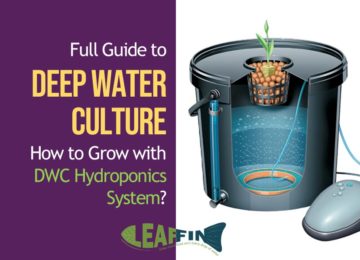
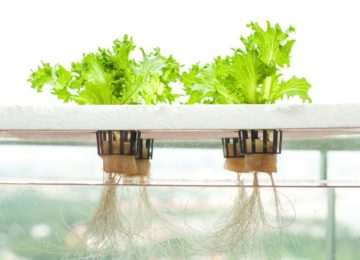
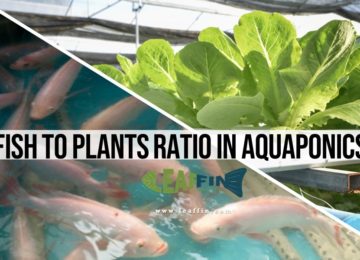
excellent information regarding aquaponics system
I am very interested in making my own, but it sounds so complicated. Are there any simpler method like plug and play aquaponics system? Like just setting up an aquarium and caring for some fish?